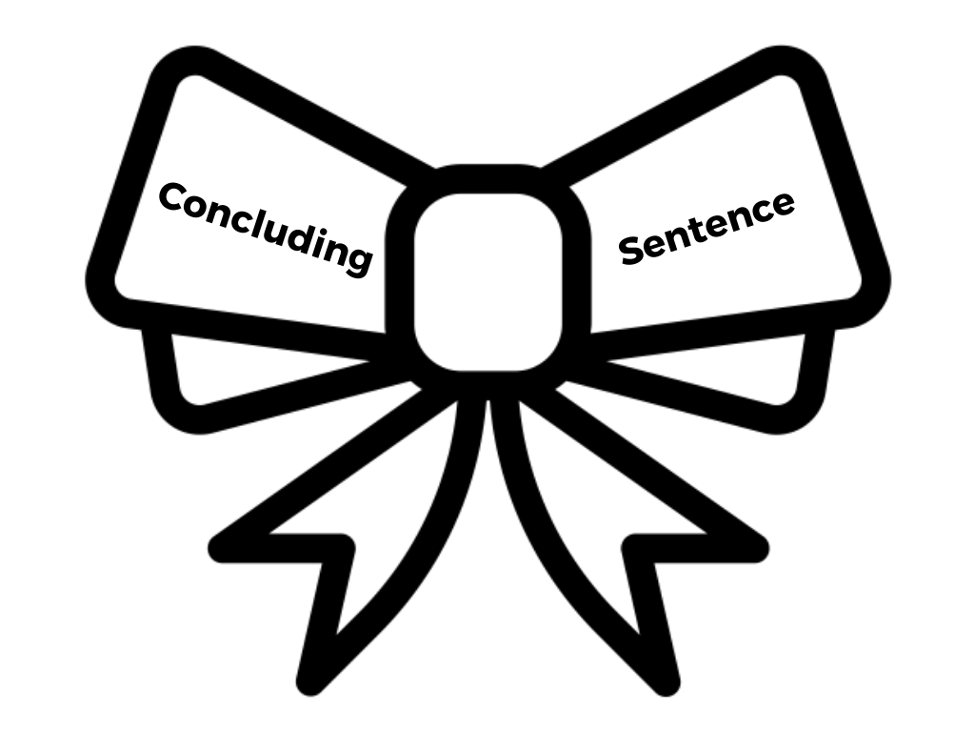73 Concluding Sentences
Ending a paragraph is comparable to politely leaving one conversation before you begin another. Most people try not to “ghost” their friends by exiting in the middle of a conversation. Instead, they use verbal and non-verbal cues to indicate that the conversation is coming to a close. Why? Because people love having a sense of closure at the end of social exchanges.
Writing, like talking at a party, is another type of social exchange. When you write a paragraph, you’re communicating ideas that help to build relationships and understanding between you and your reader. At the end of a paragraph, your reader expects you to give some closure to the discussion with a concluding sentence that ties the paragraph up in a neat and tidy bow. Perhaps your concluding sentence ties up several loose ends by bringing all the ideas together in one statement that unifies or demonstrates the connections among the ideas discussed. Or you might opt instead to comment on how the points are very relevant to your shared interests or could be points of further discussion. Finally, you might segue by moving the conversation in a new direction or toward a new idea.

Here’s an example of a segue sentence that transitions the reader out of the topic of one hypothetical paragraph (maybe focused on disputing the long-term viability of cults from a sociological perspective) and into the topic of the next paragraph (which might be a historian’s evidence-based perspective on cults):
Although plenty of sociologists have debated the long-term viability of cults, some historians provide contradictory evidence to confirm the staying power of cults over time.
Do you see how the example concluding sentence points back before pointing forward? This rhetorical move ties up the focus of the last paragraph while also working to keep the reader interested in what comes next.
